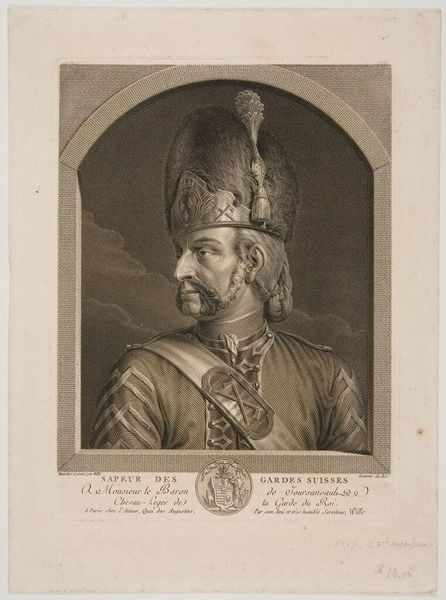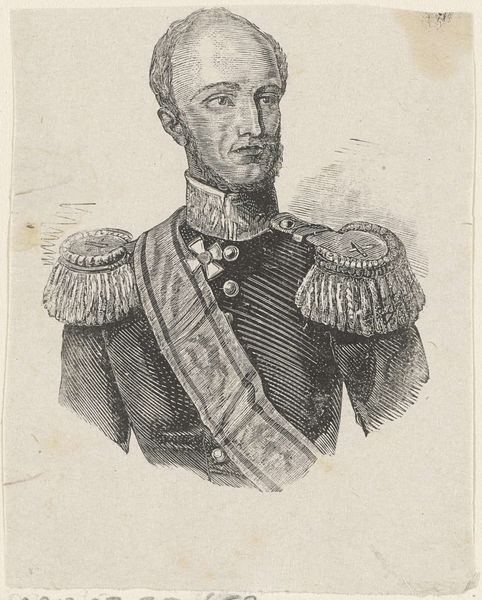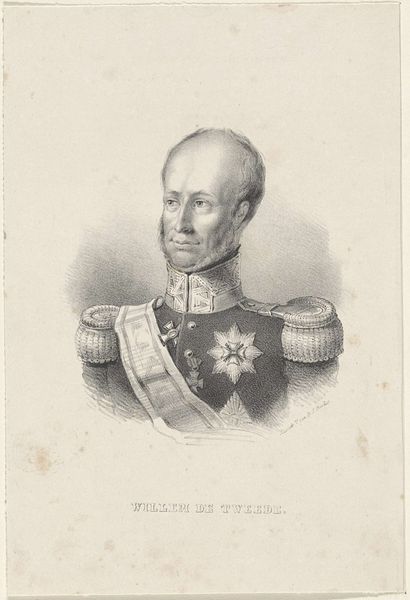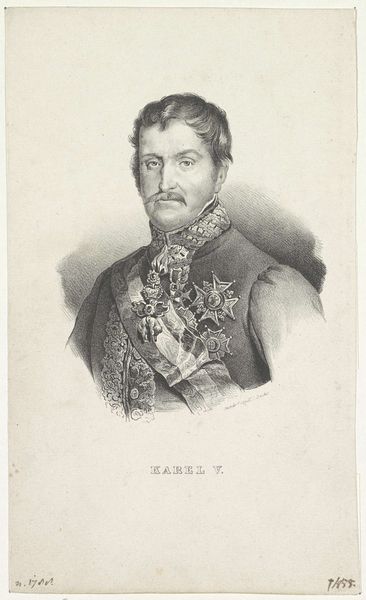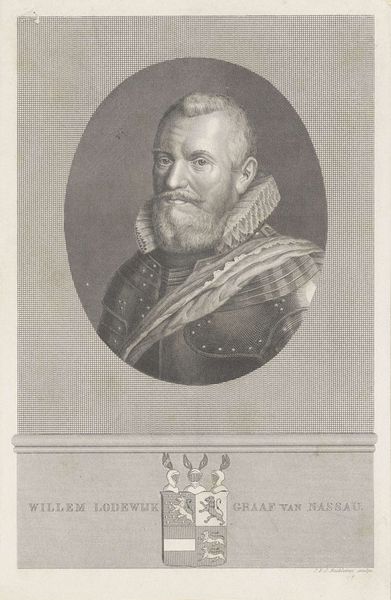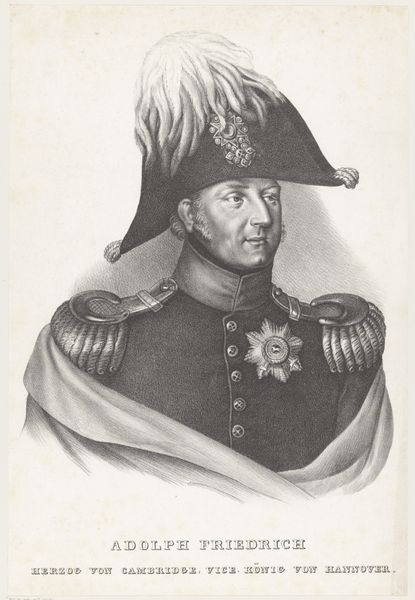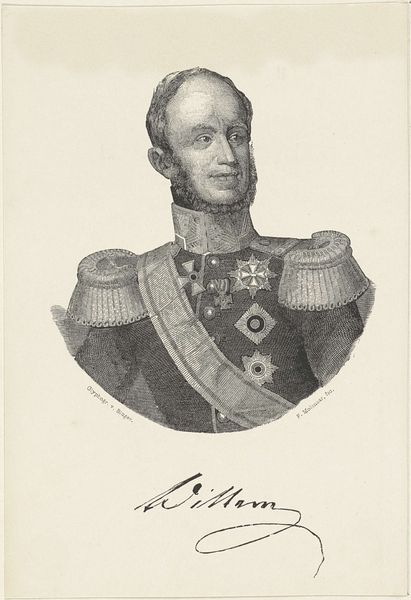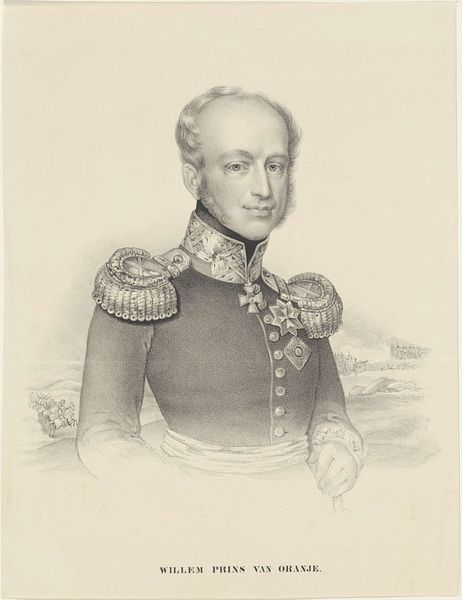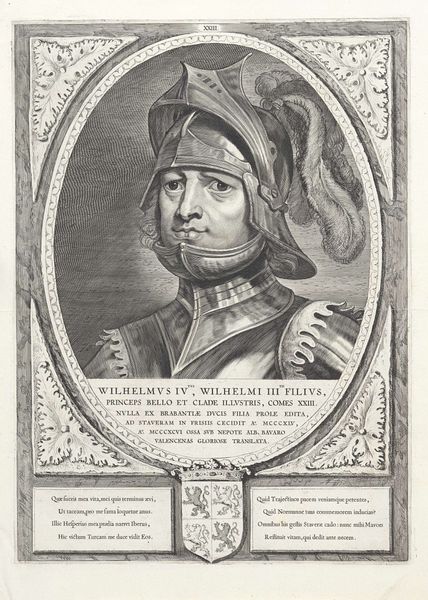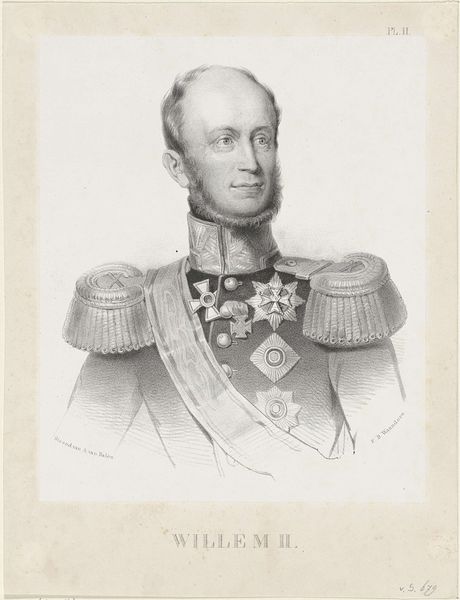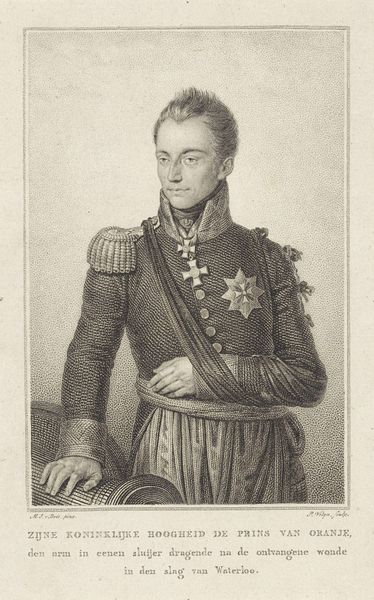
Dimensions: 228 × 187 mm (image); 257 × 193 mm (plate); 262 × 198 mm (sheet)
Copyright: Public Domain
Curator: Here we have Johann Georg Wille’s “Sapper of the Swiss Guards,” an engraving made in 1779 and now part of the collection at the Art Institute of Chicago. Editor: My first thought is how formal and contained this portrait feels. Everything, from his facial expression to his uniform, is meticulously detailed. The subject himself, staring resolutely off into the distance as he’s framed in this archway…it’s all very considered, almost self-consciously so. Curator: Indeed. Wille, as a printmaker, was working within very particular representational conventions, reflecting the social hierarchies of the time. What do you make of the sitter’s attire? Editor: That tall fur hat immediately grabs my attention. It's almost comical in its size. Is it meant to project power, authority? What’s interesting is the contrast between the fur, so organic and tactile, and the metallic decorations alluding to order. Curator: It certainly speaks to rank. This image tells a larger story about military identity and the visual language used to communicate it. A Sapper, you see, would have originally been responsible for tasks such as digging trenches and laying explosives—engineering roles of great significance to the success of battles. That ornate sash across his chest is embellished with crossed axes, reinforcing his occupation. The Swiss Guard, moreover, held enormous symbolic value throughout Europe. Editor: So, while on the surface, we see an individual portrait, underneath there's a tapestry of meaning woven into his uniform and accouterments. It’s as if his clothes don’t just cover him, but are intrinsic to the very presentation of his person, solidifying a constructed image. It's interesting how a work like this serves not just to represent but almost to enact authority. Curator: And the Baroque style with its emphasis on drama and detail, serves to further amplify this sense of controlled power, even artifice. The way the light catches the metal of his headdress, the minute rendering of the facial features all reinforces the image's presence. Editor: Reflecting upon it all, one can see how even this relatively simple print becomes a cultural artifact in itself. It reveals a complex world of social roles, military hierarchies, and the symbolic language through which these were asserted and understood in the late 18th century. Curator: Absolutely. Every detail serves to construct an image of power, permanence and, indeed, imperial confidence.
Comments
No comments
Be the first to comment and join the conversation on the ultimate creative platform.

